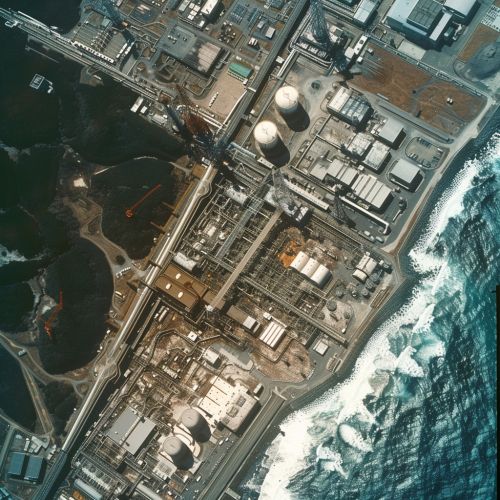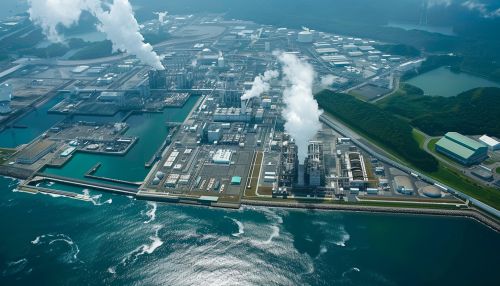Fukushima Daiichi nuclear disaster
Overview
The Fukushima Daiichi nuclear disaster was a nuclear accident that occurred at the Fukushima Daiichi (Number 1) Nuclear Power Plant in the towns of Ōkuma and Futaba in the Fukushima Prefecture, Japan. The disaster began on March 11, 2011, following a severe earthquake and tsunami, and is considered the most severe nuclear disaster since the Chernobyl disaster in 1986.


Background
The Fukushima Daiichi Nuclear Power Plant, owned by the Tokyo Electric Power Company (TEPCO), is located on a 3.5-square-kilometer site in the towns of Ōkuma and Futaba in the Futaba District of Fukushima Prefecture, Japan. The plant consists of six boiling water reactors (BWRs) that were designed by General Electric (GE) and Toshiba, and constructed between 1967 and 1979. At the time of the disaster, only reactors 1-3 were operational, while reactors 4-6 were in various stages of refueling and maintenance.
The Disaster
On March 11, 2011, a 9.0-magnitude earthquake struck off the northeastern coast of Japan. The earthquake was one of the strongest in recorded history and triggered a massive tsunami that reached heights of up to 40 meters. The tsunami inundated the Fukushima Daiichi plant, causing severe damage to the plant's infrastructure and leading to the failure of its cooling systems.
Reactor Failures
The earthquake and tsunami led to a series of equipment failures, nuclear meltdowns, and releases of radioactive materials at the Fukushima Daiichi Nuclear Power Plant. The most significant of these was the failure of the plant's cooling systems, which are essential for maintaining the temperature of the reactor cores within safe limits. Without adequate cooling, the reactor cores overheated, leading to a series of nuclear meltdowns and hydrogen-air chemical reactions that caused a series of explosions.
Radiation Release
The explosions damaged the reactor buildings and caused the release of significant amounts of radioactive materials into the environment. The release of radiation was a major concern, as it posed a significant risk to public health and the environment. The release of radiation led to the evacuation of residents within a 20-kilometer radius of the plant and the establishment of a no-entry zone that remains in place to this day.
Aftermath
The aftermath of the Fukushima Daiichi nuclear disaster has had far-reaching effects on the local population, the environment, and the global nuclear industry. The disaster has also raised significant questions about the safety of nuclear power and the adequacy of nuclear safety standards.
Evacuation and Relocation
In the immediate aftermath of the disaster, the Japanese government evacuated approximately 154,000 residents from the areas surrounding the Fukushima Daiichi plant. The evacuation was initially a precautionary measure, but as the severity of the situation became apparent, the evacuation zone was expanded and the residents were relocated to temporary housing.
Environmental Impact
The environmental impact of the Fukushima Daiichi nuclear disaster has been significant and long-lasting. The release of radioactive materials into the environment has contaminated the land, air, and water in the surrounding areas. The contamination has had a significant impact on the local ecosystem, with numerous studies documenting the effects of radiation on wildlife.
Impact on the Nuclear Industry
The Fukushima Daiichi nuclear disaster has had a profound impact on the global nuclear industry. The disaster has led to a reevaluation of nuclear safety standards and has resulted in significant changes in the design and operation of nuclear power plants. Many countries have also reconsidered their use of nuclear power in the wake of the disaster.
